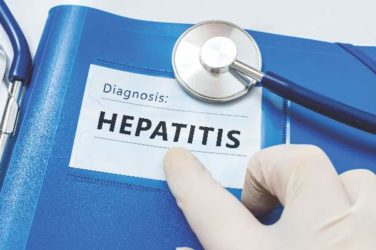On Oct. 1, 2015, take a few moments to reflect on 17th century British haberdasher John Graunt. Why? Because Graunt was not merely a purveyor of men’s clothing, but also a demographer and developer of one of the earliest known statistical studies of disease.
Historians consider his 1662 book, “Natural and Political Observations Made Upon the Bills of Mortality,” to be a seminal moment in the genesis of disease classification. Though it was merely a rudimentary beginning, it led others to build upon its framework in categorizing causes of death. But it wasn’t until almost 200 years later that British statistician William Farr proposed a new system to bring medical statistics beyond just mortality. This newer schema, promoted even by Florence Nightingale, would go on to become the impetus for the International Classification of Diseases, Injuries, and Causes of Death, eventually known as the International Classification of Diseases (ICD).
In just a few short weeks, the U.S. health care system will finally embrace the 10th revision of that system, but even this version is far from new. The World Health Organization completed work on ICD-10 in 1992, and it was first adopted by other countries starting with Australia in 1998. In fact, we are among the last developed nations to move into the modern era of disease classification with ICD-10, and this month we felt it would be worthwhile to mark that milestone with a bit of history and a commonsense explanation of what to expect.
Modern terminology
A modern health care system can’t function optimally with a disease classification scheme that is 40 years old; ICD-9 codes, initially conceived in 1975, lack specificity and are replete with antiquated descriptors.
One need not look very far to find examples. The code 200.1, for example, was originally termed “lymphosarcoma,” a deprecated term now replaced with “non-Hodgkin’s lymphoma.” More strikingly, the code 318.0 was initially termed “imbecile.” Today we know this term more appropriately as “moderate intellectual disabilities.” Even if we put political correctness aside, the modern term is clearly a much more accurate and useful descriptor for the diagnosis. But the enhancements in ICD-10 don’t end there.
Increased specificity
Perhaps more important than the descriptors themselves is the logic behind the coding system.
All ICD-10 codes begin with a letter, followed by a series of numbers. These numbers reveal a much greater level of detail than was ever part of ICD-9, such as causal relationship, severity, temporal factors, location, quality, and status. For example, as revised in the ICD-10 system, the ICD-9 code 725.9 (pain in limb) “explodes” into dozens of codes specifying location, all beginning with the prefix M79. These include M79.622 (pain in left upper arm), M79.674 (pain in right toes), M79.652 (pain in left thigh), and so on. Or, in the case of 465.9 (upper respiratory infection), the codes expand to specify the area of infection and causal agent, such as J02.0 (acute streptococcal pharyngitis) or J20.4 (acute bronchitis due to parainfluenza virus).
While this all might seem overwhelming at first, it’s important to note there will be some initial flexibility. The Centers for Medicare & Medicaid Services has stated that for the first year of implementation, it will accept any ICD-10 code from the correct “family,” regardless of specificity (i.e., as long as the letter and first two numbers are correct). In the case of “pain in limb” as above, any 3 digits following M79 with be acceptable. But there is a legitimately good reason to be as specific as possible with the new codes starting now: medical cost management.
Medical cost management is the idea that reimbursement should be related to patient complexity. In other words, caring for sicker patients is more costly and time consuming, so providers should be compensated appropriately. Private insurers have been focusing a lot of attention on this, as their reimbursement rates through Medicare Advantage plans are based on the complexity of the patients they cover. Gradually, this has trickled down to physician payments, as value-based care is growing in importance. Accordingly, we would encourage all physicians to code in a way that accurately reflects the level of morbidity in their patients. After all, if you’re taking care of really complicated patients, you should be getting paid appropriately for it. That’s where ICD-10 can be advantageous, as it allows providers to plainly document the severity of disease in their population through a system that’s easy to capture and collate.
Avoiding insanity
There is a point where the need to be so specific translates into some fairly funny ICD-10 codes. We simply can’t avoid citing a few examples: Z63.1 (problems in relationship with in-laws), W61.52XA (struck by goose, initial encounter), and our personal favorite, V91.07XD (burn due to water skis on fire). While quite funny, this level of specificity also brings up a critical question: With so many codes, how does one find the correct one for the diagnosis when seeing a patient?
Thankfully, 21st century tools make the task of locating the appropriate code much simpler than it would have been when ICD-10 was first conceived. Using plain-text search engines such as those from Intelligent Medical Objects, clinicians can be as specific as possible when searching for diagnoses. There are also apps for mobile devices and Web-based tools like ICD10Data.com that are user friendly and completely free. Most importantly, EHR vendors have been anticipating the transition to ICD-10 and have built many of these tools into their products already.
Closing thoughts
We fully acknowledge that this transition to increased specificity may be anxiety provoking, but we are also forced to accept that it is necessary. While it is debatable whether figures like Graunt and Farr are worthy of accolade or ire (though on Oct. 1 most will probably choose the latter), it’s undeniable that there is a need to gather and tabulate statistics on medical diagnoses. That need was first formally addressed well over 300 years before the dawn of electronic health records and will continue to be addressed for hundreds more. In the meantime, we have a code we’d like to propose for ICD-11: E011.13 – anxiety due to heath information technology. Like ICD-10, this is a concept that’s far from new and certainly here to stay.
Dr. Notte is a family physician and clinical informaticist for Abington (Pa.) Memorial Hospital. He is a partner in EHR Practice Consultants, a firm that aids physicians in adopting electronic health records. Dr. Skolnik is associate director of the family medicine residency program at Abington Memorial Hospital and professor of family and community medicine at Temple University in Philadelphia.




